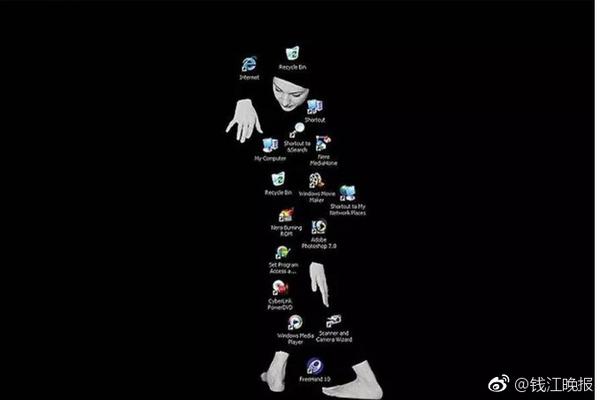
1. Click "System Restore" in the "System Protection" interface. Click Next in the pop-up system restore prompt window. Click to show more restore points, and you can also see the restore points automatically created by the system after the update.
2. Reinstall: Reinstall is to completely clear all data and files on the computer and then reinstall the operating system.All data should be backed up before reinstalling, because reinstalling will clear all data on the hard disk, including personal files, documents, photos, music, etc. It is suitable for problems and major failures of system software and hardware.
3. Step 1, turn on the computer, click the "Start" key, and click the "Settings" option. Step two, after the setting interface pops up, select the "Update and Security" option. Step three, after the new interface pops up, select the "Restore" option on the left. Click the "Start" option to restore this computer.
4. Search Create a restore point from the taskbar and select it from the list of search results. In the "System Protection" tab, select "Create". Enter the description of the restore point, and then select "Create" and "OK" in turn.
1. First of all, we turn on the power Enter the desktop, click the start icon on the left, and then enter the system information. After the search is completed, click the search results. Next, we can find the version of our current system on the system information interface.Then we go back to the start menu and click the setting option.
2. Enter [Recovery Options] 1 in the Windows search bar, and then click [Open] 2. In the project that went back to the previous version of Windows 10, click [Start] 3. If you don't have this project, you may have updated Windows for more than 10 days or you can't do it back due to other operations.
3. Open the "Control Panel". Find "Restore" in the panel and click to open. Click "Open System Restore" on the right to open it. There are two options here. The first is the restore point recommended by the system (that is, the system automatically restores to the state before normal), and the second is to choose a restore point by yourself.
4. [Answer]: WindoWs 10 has its own rollback function. Users only need to click the [Operation Center Icon] in the lower right corner of the Windows 10 desktop and enter [All Settings]. Then select [Update and Security] and [Restore] in turn, and finally click the [Start] button under [Back to Windows 7].
1, click the "Start" button in the lower left corner. 2 Click "Settings" - "Update and Security" - "Restore" - "Reset this computer" - "Start" in order.
2. Click the "Settings" button. Click the "Update and Security" button. Click "Restore" and then select "Reset This Computer".Click "Start". Choose the appropriate option according to your needs.
3. First of all, you can find the settings from the beginning. As shown in Figure 1, click the button at the arrow to open the settings in Figure 2. Keep scrolling down, find the last update button, and click Open. At this time, the interface generally stays on other pages. As shown in the figure below, you need to use recovery here. Find this item, open the page, and you can use the reset function.
4. Click the "Start" button 2 in the lower left corner and click "Settings", "Update and Security", "Restore", "Reset this computer", "Start". If you can't enter the system, you can also try to force the shutdown twice. When it is turned on for the third time, it will automatically enter the Windows RE repair environment 3 According to the individual.
App to watch Champions League live free-APP, download it now, new users will receive a novice gift pack.
1. Click "System Restore" in the "System Protection" interface. Click Next in the pop-up system restore prompt window. Click to show more restore points, and you can also see the restore points automatically created by the system after the update.
2. Reinstall: Reinstall is to completely clear all data and files on the computer and then reinstall the operating system.All data should be backed up before reinstalling, because reinstalling will clear all data on the hard disk, including personal files, documents, photos, music, etc. It is suitable for problems and major failures of system software and hardware.
3. Step 1, turn on the computer, click the "Start" key, and click the "Settings" option. Step two, after the setting interface pops up, select the "Update and Security" option. Step three, after the new interface pops up, select the "Restore" option on the left. Click the "Start" option to restore this computer.
4. Search Create a restore point from the taskbar and select it from the list of search results. In the "System Protection" tab, select "Create". Enter the description of the restore point, and then select "Create" and "OK" in turn.
1. First of all, we turn on the power Enter the desktop, click the start icon on the left, and then enter the system information. After the search is completed, click the search results. Next, we can find the version of our current system on the system information interface.Then we go back to the start menu and click the setting option.
2. Enter [Recovery Options] 1 in the Windows search bar, and then click [Open] 2. In the project that went back to the previous version of Windows 10, click [Start] 3. If you don't have this project, you may have updated Windows for more than 10 days or you can't do it back due to other operations.
3. Open the "Control Panel". Find "Restore" in the panel and click to open. Click "Open System Restore" on the right to open it. There are two options here. The first is the restore point recommended by the system (that is, the system automatically restores to the state before normal), and the second is to choose a restore point by yourself.
4. [Answer]: WindoWs 10 has its own rollback function. Users only need to click the [Operation Center Icon] in the lower right corner of the Windows 10 desktop and enter [All Settings]. Then select [Update and Security] and [Restore] in turn, and finally click the [Start] button under [Back to Windows 7].
1, click the "Start" button in the lower left corner. 2 Click "Settings" - "Update and Security" - "Restore" - "Reset this computer" - "Start" in order.
2. Click the "Settings" button. Click the "Update and Security" button. Click "Restore" and then select "Reset This Computer".Click "Start". Choose the appropriate option according to your needs.
3. First of all, you can find the settings from the beginning. As shown in Figure 1, click the button at the arrow to open the settings in Figure 2. Keep scrolling down, find the last update button, and click Open. At this time, the interface generally stays on other pages. As shown in the figure below, you need to use recovery here. Find this item, open the page, and you can use the reset function.
4. Click the "Start" button 2 in the lower left corner and click "Settings", "Update and Security", "Restore", "Reset this computer", "Start". If you can't enter the system, you can also try to force the shutdown twice. When it is turned on for the third time, it will automatically enter the Windows RE repair environment 3 According to the individual.
App to watch Champions League live free
author: 2025-02-11 02:32 PAGCOR online casino free 100
PAGCOR online casino free 100
636.91MB
Check bingo plus update today Philippines
bingo plus update today Philippines
592.67MB
Check bingo plus update today Philippines
bingo plus update today Philippines
718.49MB
Check casino plus free 100
casino plus free 100
482.68MB
Check DigiPlus
DigiPlus
383.69MB
Check Casino Plus
Casino Plus
239.69MB
Check UEFA TV
UEFA TV
354.54MB
Check UEFA Champions League
UEFA Champions League
529.34MB
Check UEFA live free
UEFA live free
238.72MB
Check DigiPlus Philippine
DigiPlus Philippine
792.29MB
Check UEFA TV
UEFA TV
539.33MB
Check App to watch Champions League live free
App to watch Champions League live free
274.65MB
Check Hearthstone arena
Hearthstone arena
596.48MB
Check Casino Plus
Casino Plus
946.22MB
Check Casino Plus login register
Casino Plus login register
251.51MB
Check Arena Plus login
Arena Plus login
771.47MB
Check Walletinvestor digi plus
Walletinvestor digi plus
793.83MB
Check Free sports events uefa champions league app android
Free sports events uefa champions league app android
332.26MB
Check Hearthstone Arena class tier list 2024
Hearthstone Arena class tier list 2024
873.94MB
Check PAGCOR online casino free 100
PAGCOR online casino free 100
852.61MB
Check UEFA Champions League standings
UEFA Champions League standings
374.33MB
Check UEFA Champions League
UEFA Champions League
788.75MB
Check Arena plus APK
Arena plus APK
612.45MB
Check bingo plus update today
bingo plus update today
318.57MB
Check UEFA Europa League
UEFA Europa League
266.25MB
Check Hearthstone arena class win rates reddit
Hearthstone arena class win rates reddit
525.51MB
Check LR stock price Philippines
LR stock price Philippines
762.41MB
Check Hearthstone Arena class tier list 2024
Hearthstone Arena class tier list 2024
141.68MB
Check Hearthstone arena deck Builder
Hearthstone arena deck Builder
739.65MB
Check Hearthstone Wild Decks
Hearthstone Wild Decks
146.15MB
Check UEFA Champions League
UEFA Champions League
789.81MB
Check Bingo Plus
Bingo Plus
716.59MB
Check Casino Plus
Casino Plus
141.66MB
Check UEFA Europa League
UEFA Europa League
674.21MB
Check Casino Plus login register
Casino Plus login register
398.69MB
Check casino plus free 100
casino plus free 100
776.51MB
Check
Scan to install
App to watch Champions League live free to discover more
Netizen comments More
2812 Hearthstone arena deck Builder
2025-02-11 04:22 recommend
2656 Bingo Plus
2025-02-11 03:56 recommend
155 casino plus free 100
2025-02-11 03:17 recommend
569 UEFA Champions League live streaming app
2025-02-11 03:15 recommend
513 UEFA Champions League
2025-02-11 02:43 recommend